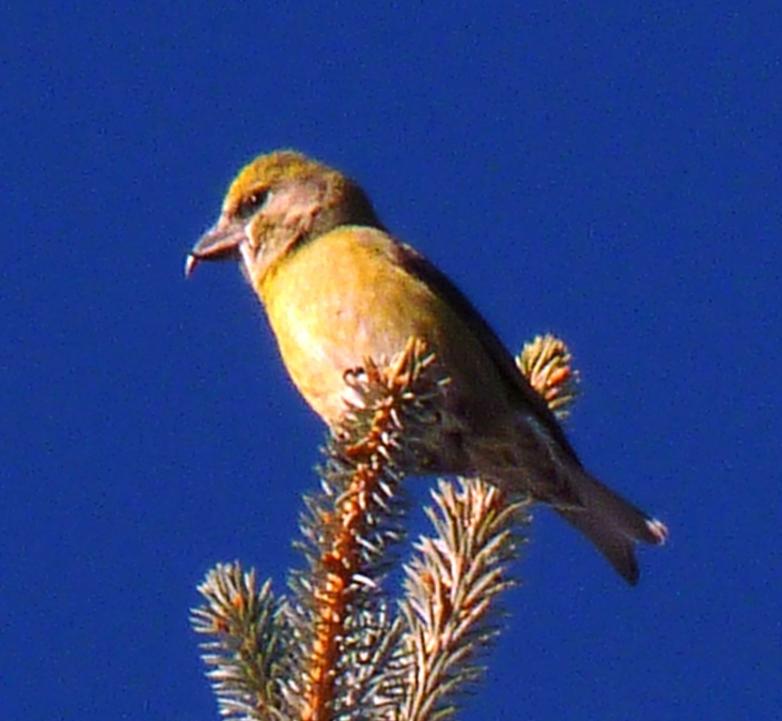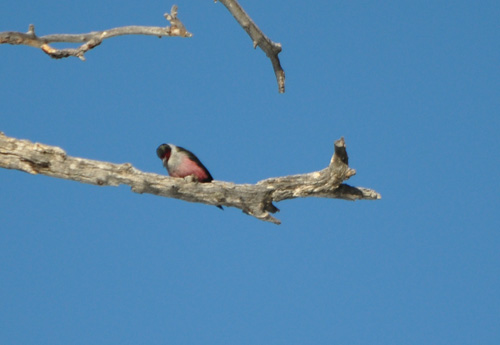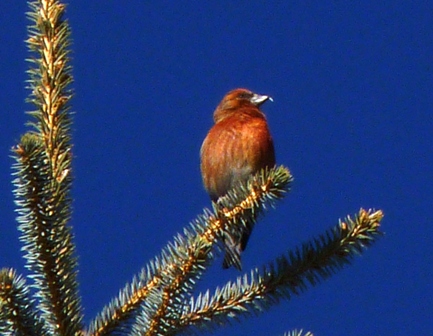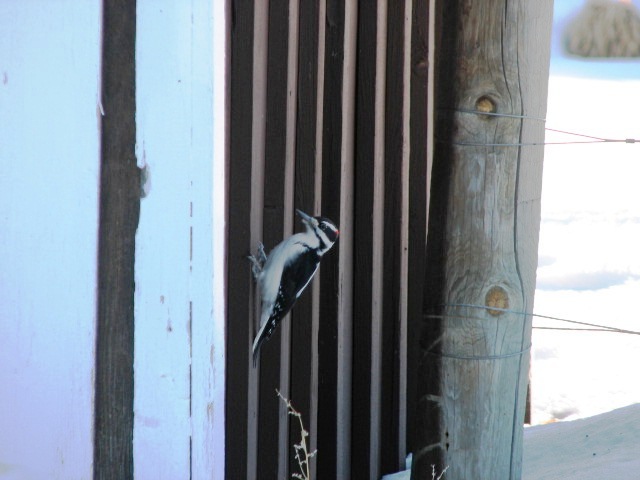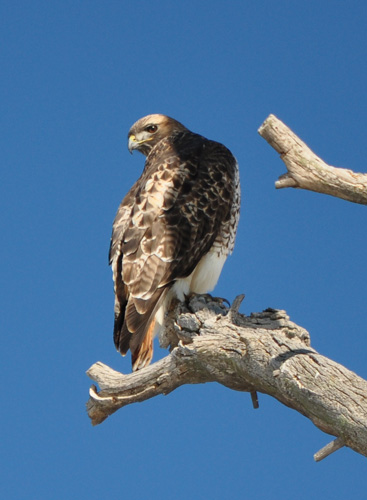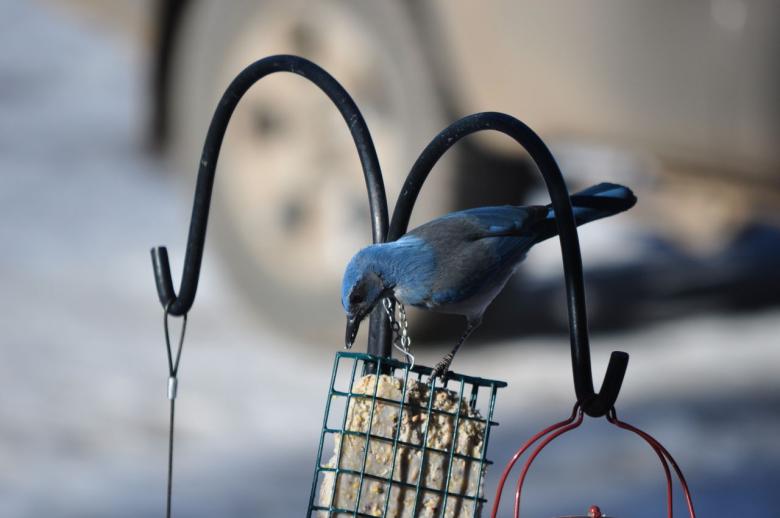TogetherGreen Innovation Grant

Read about the exciting joint project of the Southwest Conservation Corps, Navajo State Park and the Weminuche Audubon Society, sponsored by the National Audubon Society in alliance with Toyota.
Visit:
http://togethergreen.org/Projects/GranteeDetails.aspx?granteeID=107

Three Conservation Projects in Colorado Receive TogetherGreen Innovation Grants Funding
Nearly $85,000 from Nationwide Audubon/Toyota Conservation Initiative Boosts Environmental Opportunities for Colorado Teens
New York, NY, December 9, 2010 – Three Audubon groups—and their five partner organizations—are the recipients of national Innovation Grants that will directly engage Colorado teens in environmental experiences, including conducting energy audits at schools, creating trails along the Piedra River, and developing wildlife-friendly demonstration gardens in Denver.
TogetherGreen Innovation Grants, provided through an alliance between National Audubon Society and Toyota, provide seed money for projects that use innovative approaches and technologies to engage new and diverse audiences in conservation action. Innovation Grants enable awardees and their partner organizations to inspire, equip, and engage people to tackle environmental concerns and improve the health of their communities.
“The conservation solutions pioneered by TogetherGreen Innovation Grant winners are inspiring models of both ingenuity and conservation commitment,” said Audubon President David Yarnold. “Each project represents an investment in our shared environment and future – and an opportunity for many of our nation’s most creative and dedicated individuals and communities to transform their dreams into effective conservation action. As our alliance with Toyota shows, when organizations work together, they can magnify conservation results.”
The three TogetherGreen Innovation Grants projects in Colorado are:
“TogetherGreen Schools” (Denver and Weld County) Audubon Colorado and Front Range Earth Force are the collective recipients of an Innovation Grant to expand their work teaching kids about energy awareness, help new teachers learn about energy and climate change education, and provide students with the chance to conduct their own energy audits. With a $35,000 grant, the program will expand into rural Colorado schools serving mostly Hispanic students; take the necessary steps to get accreditation from the Colorado Alliance for Environmental Education; and, through communications efforts, expand the reach of the program by tapping into social networking and media resources, creating new partnerships (potentially with the Governor’s Energy Office, Project Learning Tree, Alliance for Climate Education and Youth Biz), while networking with other Audubon and Earth Force offices across the country to share the TogetherGreen Schools toolkit the partners have developed together. The partners intend to provide hands-on, real-life education to Colorado students while making a measurable impact on reducing greenhouse gas emissions.

“The Piedra River Trail Project” (Pagosa Springs) Weminuche Audubon Society, along with the Southwest Conservation Corps and Navajo State Park, have received $28,589 in TogetherGreen support to restore habitat in the San Juan and Piedra river basins in southwest Colorado. With a TogetherGreen Innovation Grant, the partners will work with community members to create a trail along the river that protects habitat damaged by an increasing number of human visitors to the area. Youth from the Southwest Conservation Corps will work with older adult mentors to help build the trail and to learn more about the ecology of the land and how to preserve this critical habitat, which harbors charismatic species like river otters. In addition to trail construction, volunteer participants will install interpretive signs, nest boxes, and wildlife-viewing platforms, and develop educational materials. The overall goal is to create a trail that not only helps protect valuable habitat, but also serves to help trail users learn about the importance and significance of the ecosystem they’re making their way through.

“Youth Conservation Corps” (Denver). With a $20,000 Innovation Grant, Audubon Society of Great Denver is partnering with Denver’s Venture Prep to create a Youth Conservation Corps for Venture Prep’s high school freshmen. As part of the project, Audubon will complement freshmen science classes with hands-on activities at the Audubon Center and on school grounds. Students will learn how to identify native and invasive plants and birds and how to design and build a native plant garden. They’ll then put their learning into practice, analyzing the current gardens at the nature center and the school and developing and implementing a plan for rehabilitating them, creating model wildlife habitat gardens for others to create on their own properties. Sample activities include removing invasive weeds, planting native plants, making and installing bird feeders, creating signage, and developing interpretive materials. Students in the Youth Conservation Corps will create native gardens that property owners in Denver can replicate, spreading wildlife habitat around the region. They’ll also obtain valuable experience in planning and implementing a project that makes a difference – experience that they’ll take home with them, and perhaps on to college and their future career.
The nearly $85,000 in Colorado Innovation Grants are part of almost $1.1 million awarded by the TogetherGreen Innovation Grants program this year. Now in its third cycle, the grants program has awarded more than $3.5 million to over 130 environmental projects nationwide. Forty three awardees in 27 states will receive grants ranging from $5,000 – $66,100 this year. Funds are awarded to partnerships between Audubon groups (local Chapters or programs of Audubon’s large national network) and organizations in their communities—with more than 125 partner organizations involved in Innovation Grant projects in the coming year. Most of the projects involve audiences previously underserved or not engaged in environmental action, from urban youth to ranchers.
In addition to financial support, Innovation Grantees receive opportunities for professional development, including a multi-day workshop held at the U.S. Fish & Wildlife’s National Conservation Training Center in Shepherdstown, West Virginia, and web-based training throughout the year. They also receive communications support, which leads to more public recognition at the local, state, and national level, and they are networked with other grantees to share best practices and learn from others.
For complete details about the 2010 TogetherGreen Innovation Grants projects, please visit: www.togethergreen.org/grants.
###
About TogetherGreen
Audubon and Toyota launched the five-year TogetherGreen initiative in 2008 to fund innovative conservation projects, support conservation leadership, and offer volunteer opportunities that significantly benefit the environment and reach new audiences. To date, TogetherGreen has supported 130 Innovation Grants projects, 120 Conservation Fellows, and over 750 Volunteer Days events nationwide. For more information, visit www.togethergreen.org.
About Audubon
Now in its second century, Audubon connects people with birds, nature and the environment that supports us all. Our national network of community-based nature centers, chapters, scientific, education, and advocacy programs engages millions of people from all walks of life in conservation action to protect and restore the natural world. Visit Audubon online at www.audubon.org.
About Toyota
Toyota (NYSE: TM) established operations in the United States in 1957 and currently operates 10 manufacturing plants, including one under construction. Toyota directly employs nearly 30,000 in the U.S. and its investment here is currently valued at more than $18 billion, including sales and manufacturing operations, research and development, financial services and design.
Toyota is committed to being a good corporate citizen in the communities where it does business and believes in supporting programs with long-term sustainable results. Toyota supports numerous organizations across the country, focusing on education, the environment and safety. Since 1991, Toyota has contributed more than $500 million to philanthropic programs in the U.S.
For more information on Toyota’s commitment to improving communities nationwide, visit http://www.toyota.com/community.










